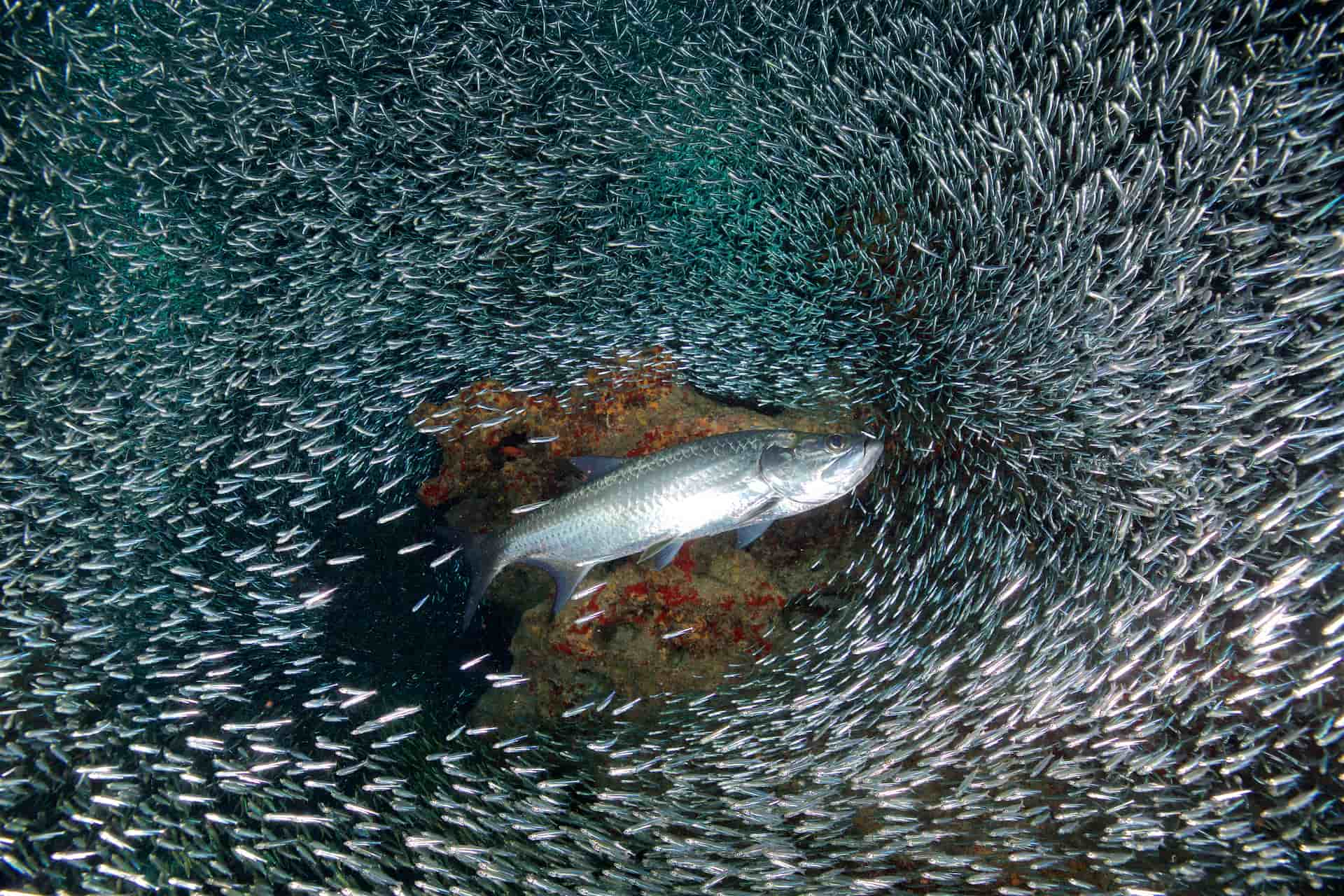Let’s Talk About Tarpon
These prehistoric fish are large and in charge

Nearly every night during our bedtime routine of reading countless books, my kids will ask me, “Why haven’t we met a dinosaur yet?” And, nearly every night, I begrudgingly admit that dinosaurs are extinct, and we probably won’t see one walking down the street anytime soon. But then I got to thinking … are they really extinct?
Sure, we don’t share morning commutes with pterodactyls or velociraptors. Still, I’d be remiss not to teach my kids about the fascinating prehistoric creatures that still live beneath our ocean’s surface. So let’s talk about tarpon.
Get Ocean Updates in Your Inbox
Sign up with your email and never miss an update.
Research of fossils has shown that the tarpon has inhabited our ocean since prehistoric times—dating back to more than 100 million years ago. Tarpon is of the genus Megalops, and just two tarpon species make up the family Megalopidae:Atlantic tarpon (M. atlanticus), those found in Atlantic waters from Virginia to Brazil, the Gulf of Mexico and throughout the Caribbean; and Indo-Pacific tarpon (M. cyprinoides), those found in the Indo-Pacific Ocean throughout Southeast Asia, Australia, Japan and Tahiti. Both species can be found in warmer marine habitats, around coral reefs, in freshwater habitats and sometimes in lakes and rivers.
The tarpon is an enormous fish with large flat, thick and silver scales that look like body armor. Atlantic tarpon make up the larger of the two species, with male tarpon reaching up to eight feet in length and weighing up to 280 pounds. Female Atlantic tarpon are even larger and can grow longer than eight feet and weigh as much as 300 pounds. The females can also live for more than 50 years and the males—particularly the smaller males—live for about 30 years. Due to its coloring and size, and the bright flicker that shines when it jumps out of the water, the Atlantic tarpon is nicknamed the “silver king,” but I’m inclined to change that to the “silver queen.”
Contrary to its large size, the tarpon’s teeth are incredibly small and tightly packed together. The tarpon typically feeds on fish, crustaceans like crabs and shrimp, zooplankton and insects, and it uses a protruding lower jaw to swallow its meals nearly whole.
One of the tarpon’s most unique characteristics is its modified swim bladder. Because of its large body and active underwater affairs, the tarpon needs a substantial amount of oxygen to maintain its lifestyle. The swim bladder has “lung-like” tissue and a duct connected to the esophagus so the tarpon can gulp air when at our ocean’s surface. This primes the tarpon for swimming, and even living, in waters with low oxygen levels and allows it to limit its interactions with predators.
If you’re a fan of fishing, it might come as no surprise that the Atlantic tarpon is one of Florida’s premier game fish due to its strength and stamina. Most recreational anglers practice tarpon catch-and-release fishing, since the tarpon is not considered to be of any food value.
While tarpon have been around for more than 100 million years, it’s on all of us to ensure that the ocean they rely on is protected for millions of years to come. Ocean Conservancy is on the front lines of ocean protection, and our work is not possible without generous donors like you—donate today and make a difference.